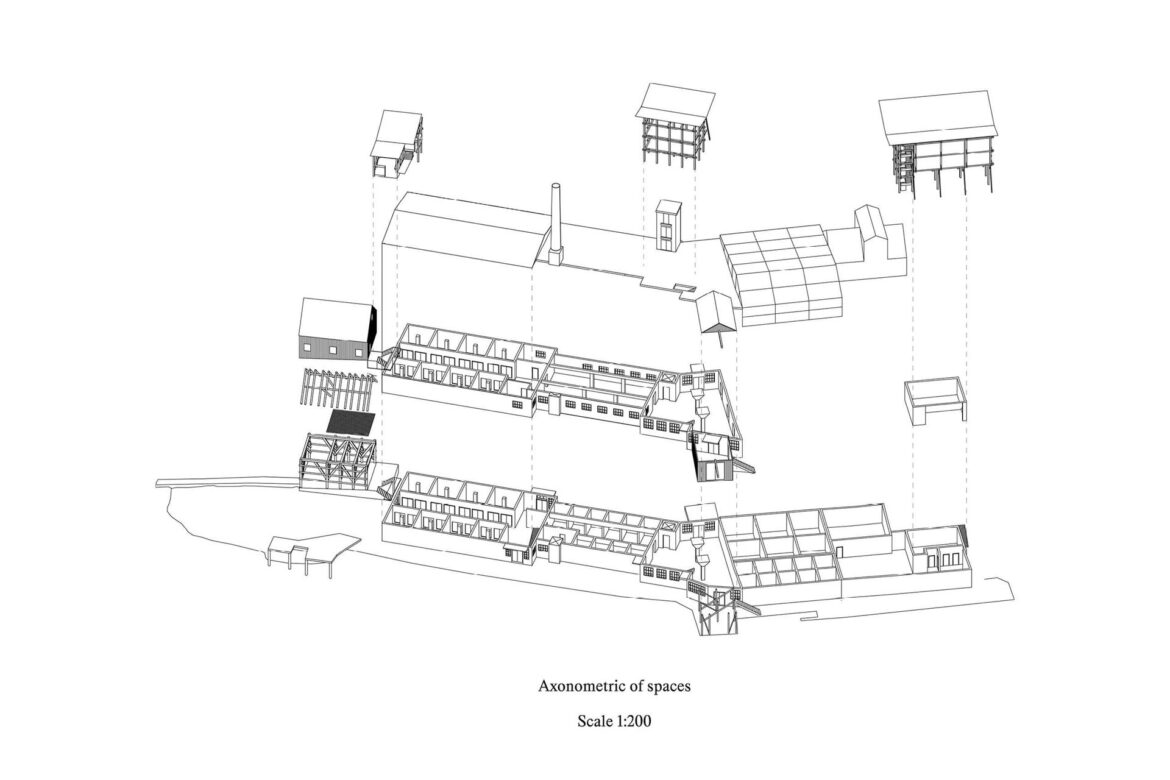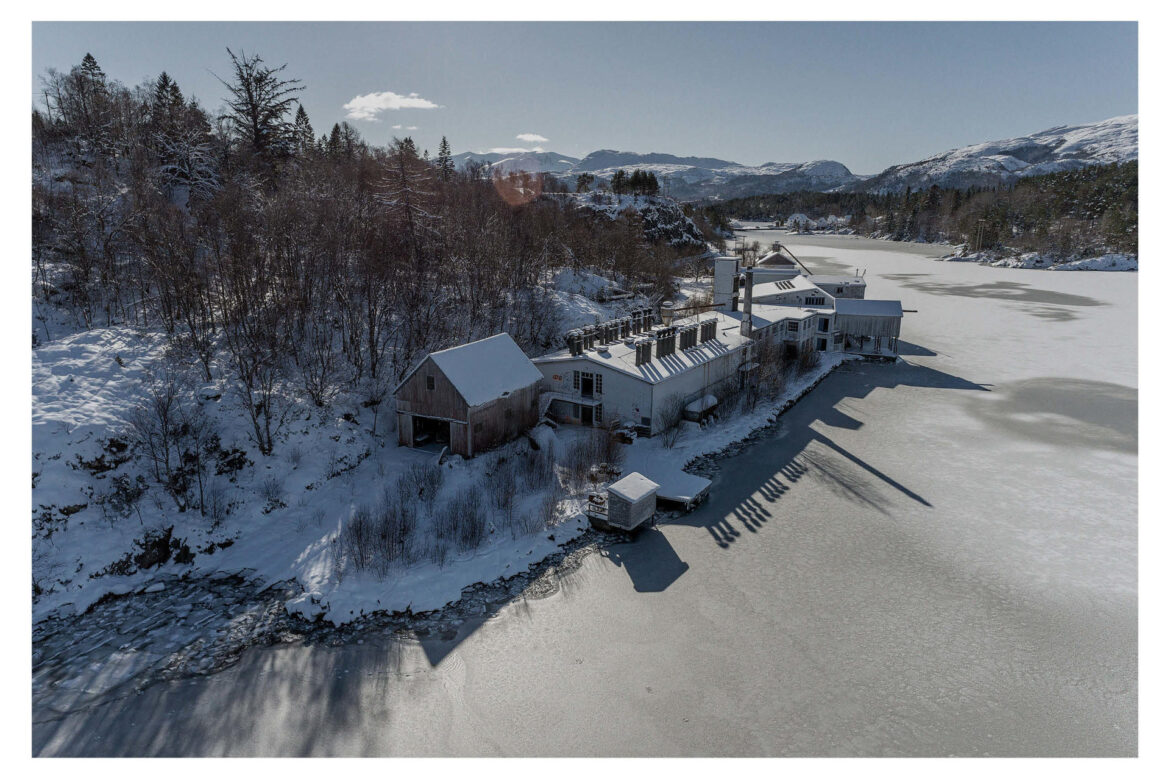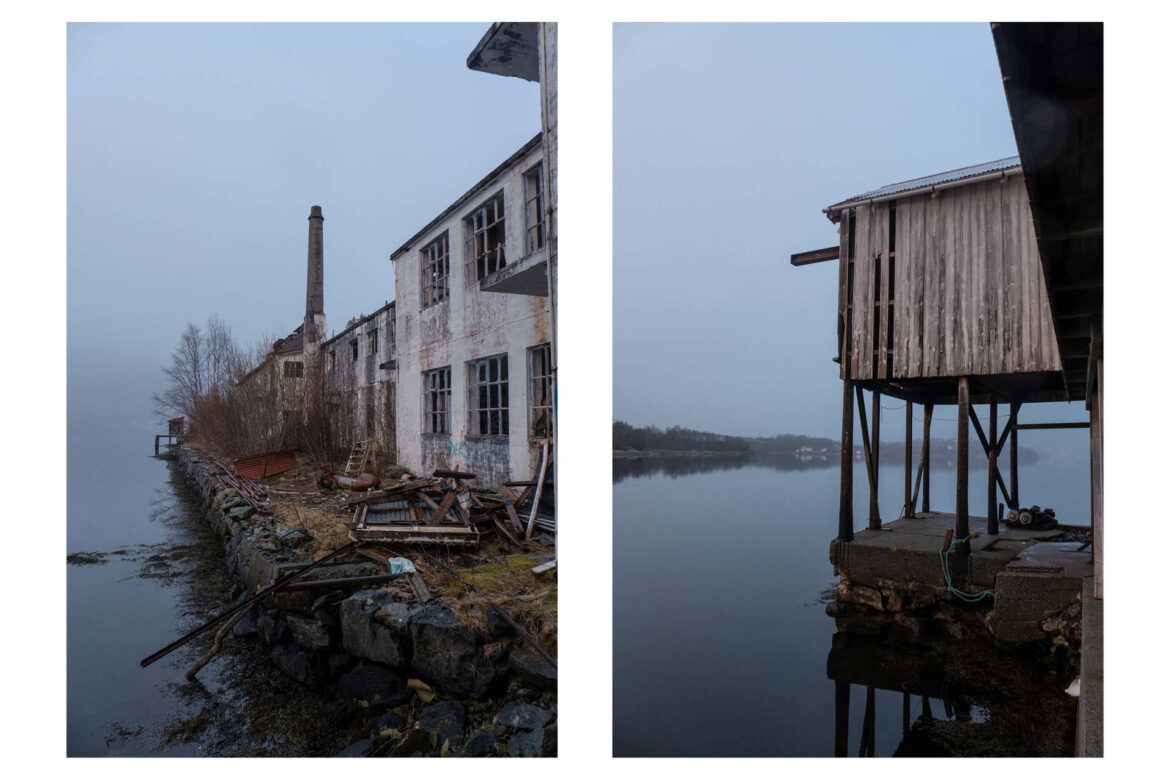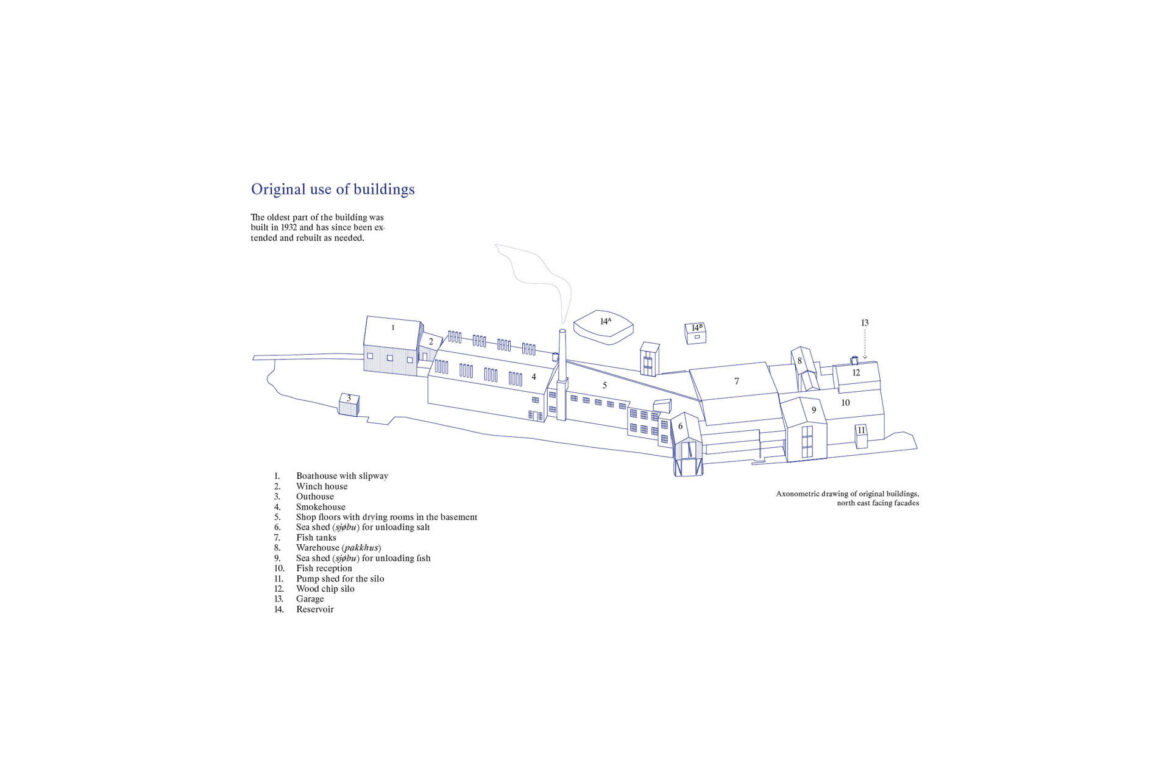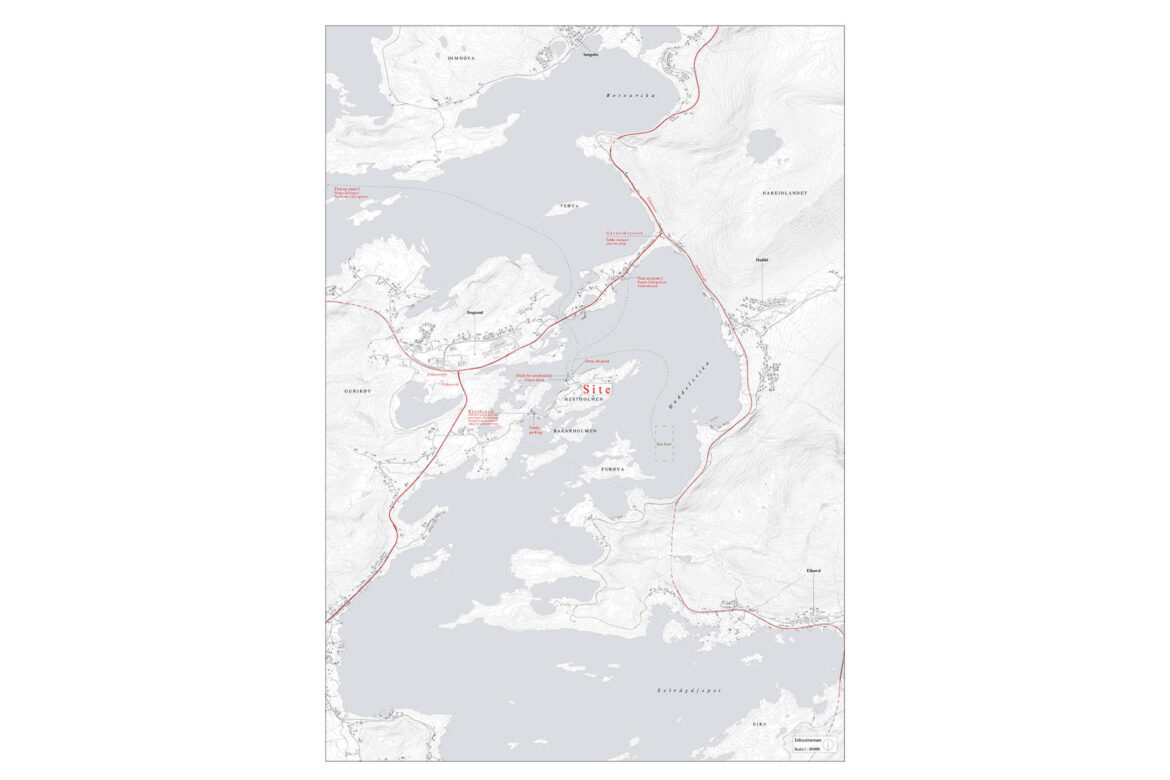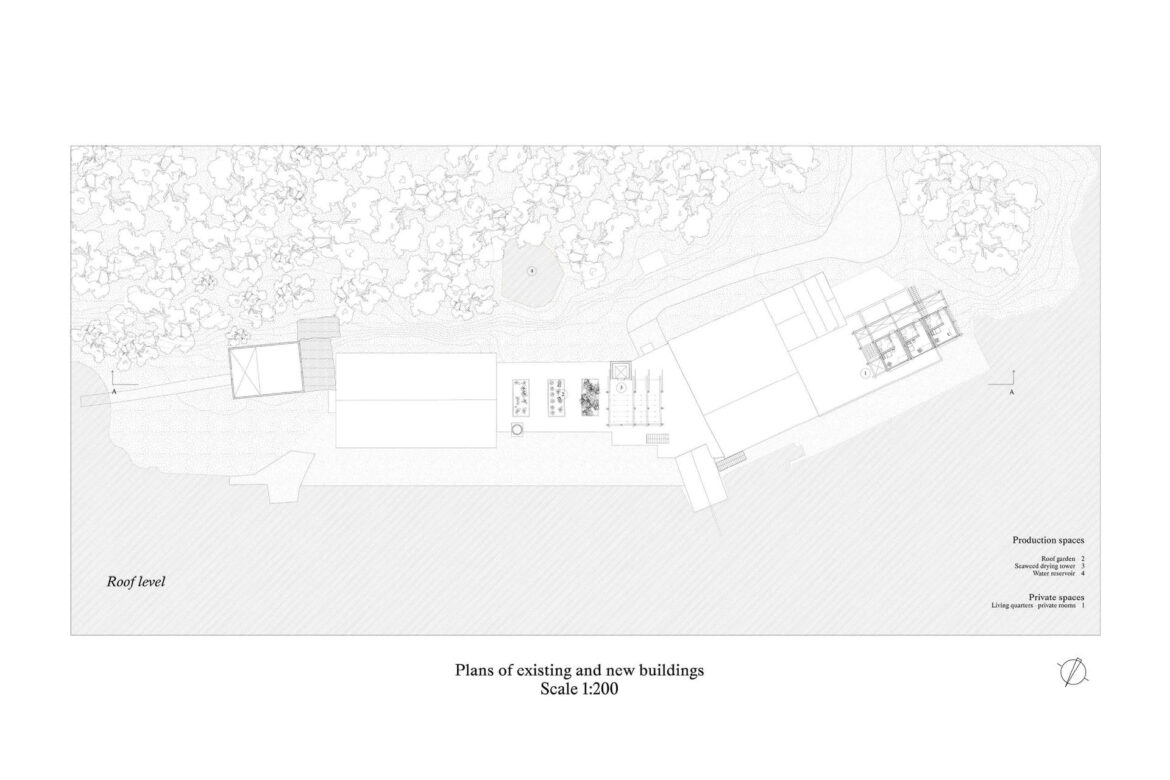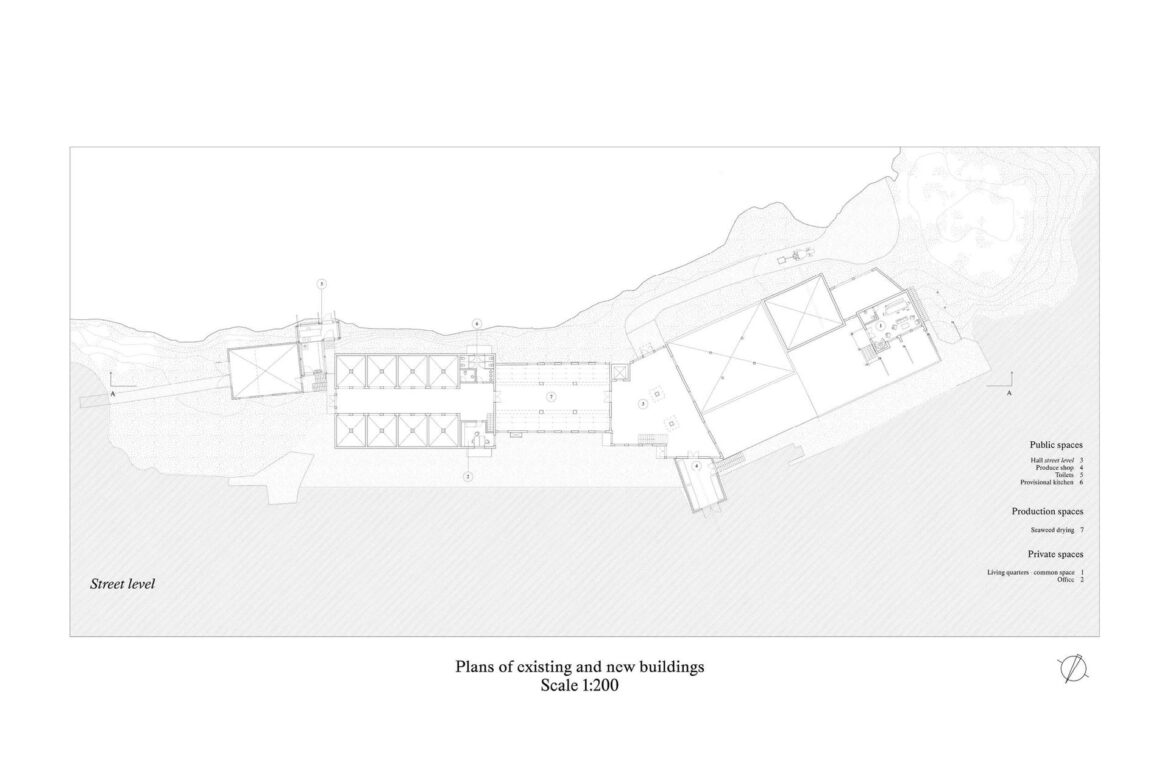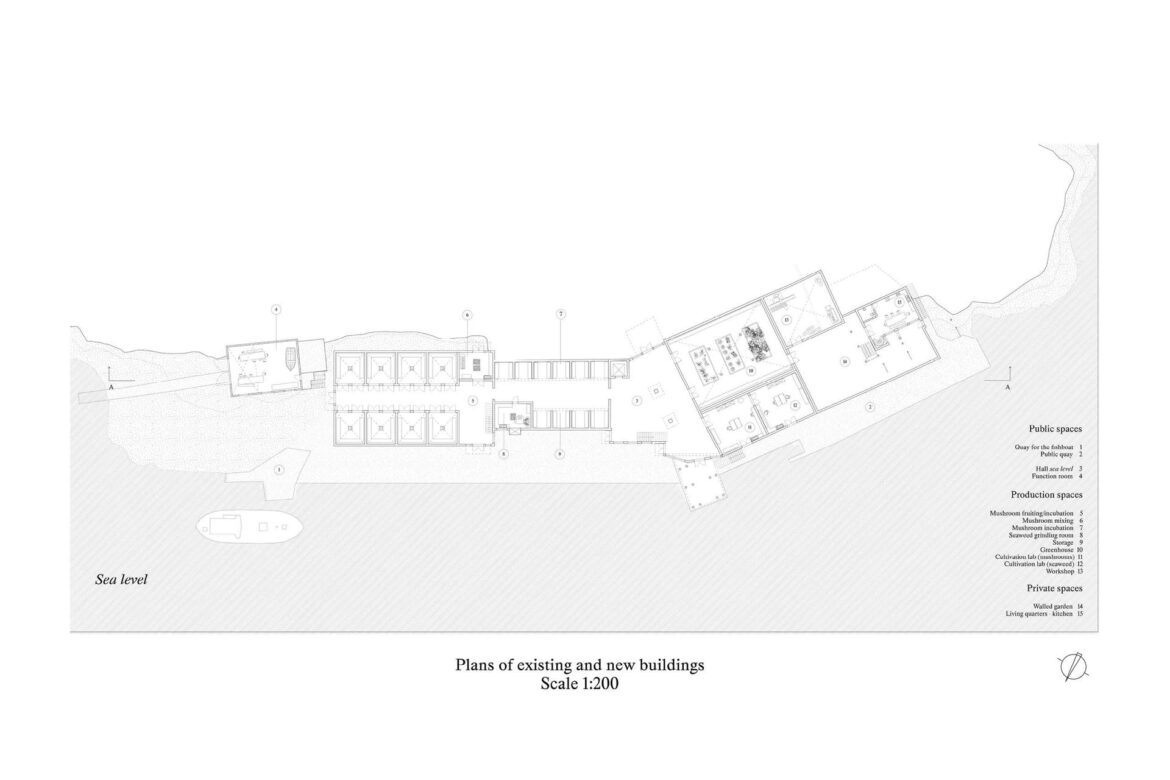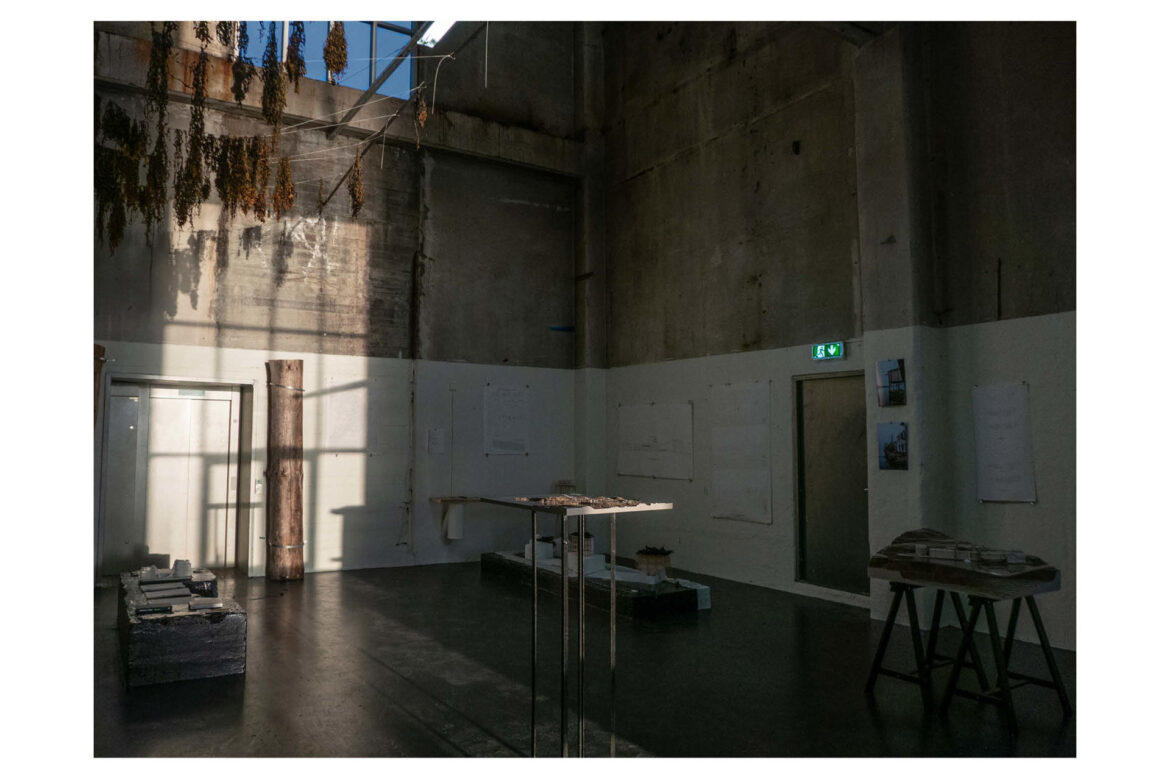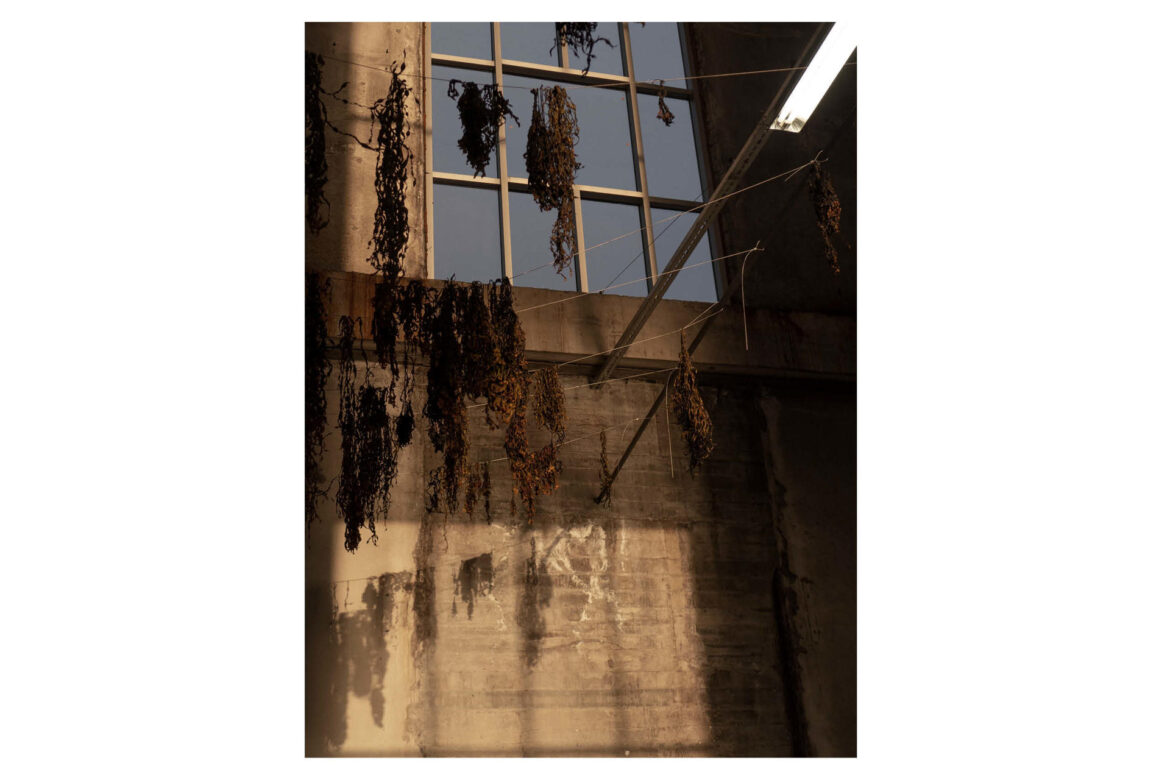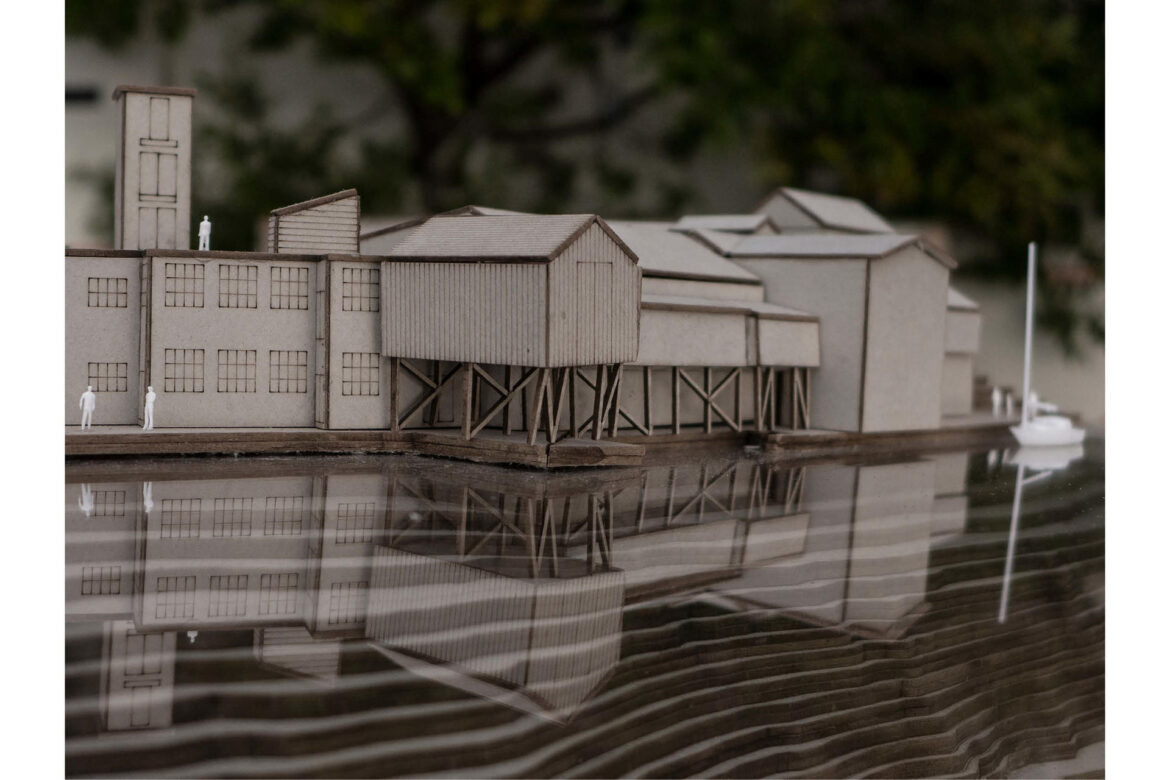The district Sunnmøre at the west coast of Norway is an area with long traditions of living by and off the sea. The name Sunnmøre comes from Norse language; ”Sunn-Mœri,” where ”møre” comes from the Norse word ”marr” “ocean, sea” and can be interpreted as “the land by the sea”. The tradition of herring fisheries in Sunnmøre dates back to Norse times, and has been one of the most important food and income sources for people in the area. In the early 20th century, the fishing was industrialized, seeing the rise of large fish processing facilities all along the west coast.
The factory at Hesthomen island in the municipality of Herøy, Sunnmøre, was closed down 20 years ago due to the collapse of the local herring stocks, after being in operation since 1932. This site is interesting because of its position at the edge between land and sea, its food-related history and its proximity to the shift happening in the seafood indusrty in Herøy, a municipality heavily reliant on unsustainable fishing industry.
As a part of the maritim klynge (maritime cluster) in Sunnmøre, Herøy is working on making their maritime industry more sustainable. One prominent company that is already ahead of this developement is TANGO Seaweed. Since 2016 they have been cultivating seaweeds according to nature’s principles at their sea farm not far from Hestholmen island.
By relocating TANGO Seaweed to the buildings of the factory, they can be a part of redefining what it means to live off and by the sea in the future. Their knowledge becomes available to new groups of people.
The existing buildings are transformed in three steps:
1 The parts that are too neglected to be saved, and the parts that don’t fit into the new programme are removed.
2 The remaining buildings are restored and adapted to new uses while retaining their historic features.
3 Three new structures are added to weawe together the new programme.
The program is designed as an ecosystem in a feedback chain of exchanges, providing through architecture, a common ground that responds to the alienation between people and their food provisions. The program facilitates for mixed-use in accordance with the annual cycles of growth and harvest.
By reprogramming the site and developing an already exisiting local buisness, this project seeks to weave together local natural and cultural resources to reinvigorate the area.
The defunct smoked herring factory provides a physical link to the past and evidence of the desire for progression in modern society. The systematic overfishing of herring can be read as a general expression of industrialization and modernity; the human being and human wants and needs are put first. Predation on nature can be said to be the dark side of industrialism and the belief in constant progress. The challenge today and in the future will be to conserve natural resources for future generations while improving resilience and adaptive capacity within the built landscape.
By taking care of nature and the species in it, we also protect the livelihoods and food security along the coast. A paradigm shift is needed – ecology is shaped by human interference and we as humans need to take other beings into the equation when operating in multi-species landscapes. As Eduardo Kohn writes on “the anthropology of life”, this is a mode of thinking that exceeds a singular focus on human life, instead concerning itself “with the effects of our entanglements with other kinds of living selves” (2007, p. 4).

